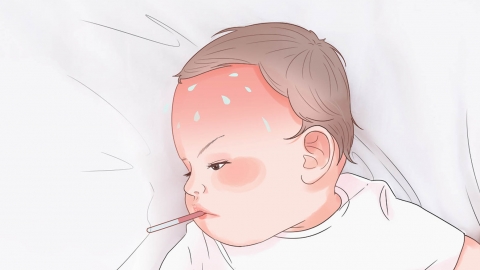How to Determine if a Baby's Fever is Caused by a Virus or Bacteria
Generally speaking, fever refers to an elevated body temperature. Whether a baby's fever is caused by a virus or bacteria can be determined through observation of symptoms, physical examination, complete blood count (CBC), procalcitonin testing, sputum culture, and other methods. If in doubt, timely medical consultation is recommended. The detailed analysis is as follows:

1. Observe Symptoms
If the fever is caused by a viral infection, the onset is usually sudden and may be accompanied by symptoms such as coughing, yellow phlegm, nasal congestion, and sore throat. In contrast, fever due to bacterial infection may lead to symptoms like nasal congestion, clear nasal discharge, muscle pain, and general weakness.
2. Physical Examination
Physical examination mainly involves observing lesions in areas such as the baby's mouth, nasal passages, and tonsils. If the baby has oral blisters, a viral infection is typically suspected. If the baby's tonsils are swollen or show signs of pus formation, a bacterial infection is more likely.
3. Complete Blood Count (CBC)
A CBC can aid in diagnosing whether the infection is viral or bacterial. In the case of a viral infection, the CBC may show a normal or decreased total white blood cell count, an increased lymphocyte percentage, and normal or decreased C-reactive protein levels. In bacterial infections, the CBC may reveal an elevated total white blood cell count and increased neutrophil percentage.
4. Procalcitonin Testing
Procalcitonin testing is primarily used to assess infection and inflammatory status in the body and can help rule out conditions such as respiratory tract infections and acute pancreatitis. If bacteria are present in the body, the procalcitonin test will show elevated PCT levels. A normal procalcitonin result may indicate infection by other pathogens.
5. Sputum Culture
Sputum culture involves testing sputum collected from the mouth. If bacteria can be cultured from the sputum, it indicates a bacterial infection. If a virus is identified, it suggests a viral infection.
In addition, the severity and progression of the illness can also help in determining the cause. If accurate differentiation is not possible, timely medical consultation is necessary for appropriate diagnostic tests to ensure prompt treatment based on the underlying cause.




